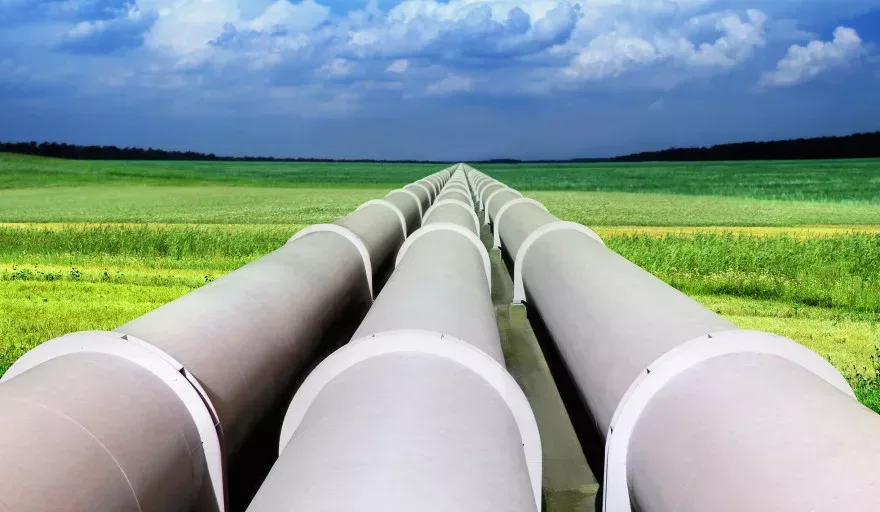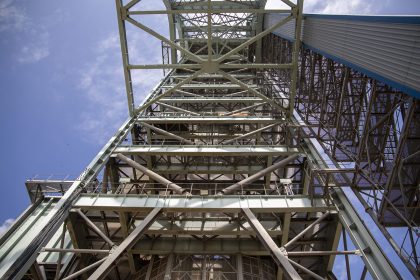Kweku Frempong, Area General Manager for West and Central Africa at Aggreko, explores virtual pipelines as the bridge to net zero for the mining sector.
REACHING NET ZERO IN MINING
COP26 put a global spotlight on the need for urgent and significant action to limit global warming. As the conference closes, attention will now naturally turn to high-emission industries and fuels, with heavy industries such as mining attracting a keen focus from governments, consumers and activists alike. This focus is not unwarranted – heavy industry accounted for 10.6 percent of global emissions in 2020 – however reducing, offsetting or preventing these emissions is not as straightforward as in other sectors.
As a fundamental step in providing the raw materials needed for modern technologies, including those found in electric cars and solar panels, mining is not an industry that can simply be phased out or replaced as we accelerate the energy transition. We need to take a pragmatic and considered approach to powering the sector and look to innovative solutions to minimise emissions and maximise efficiency, with this being a cornerstone of our own commitment to achieve net zero emissions across all operations by 2050.
When examining the mining sector, it’s hard to overstate the importance of the African industry in the global market- with 30 percent of the world’s minerals located on the continent, and mining materials comprising two thirds of Africa’s exports between 2001-2014. Aggreko has operated in the mining sector in Africa for decades and developed the world’s largest off-grid hybrid power microgrid for the mining sector at the Resolute Syamagold mine in Mali in 2019, saving over $10 million in costs and a reducing energy demand by 40 percent from the previous diesel solution.
Mines are, more often than not, located in inaccessible locations with no grid connectivity. The environments and climates can be challenging, proving insurmountable barriers to standard low-emission power sources, such as solar PV units. Offsetting existing emissions from diesel via carbon capture or use of expensive fuels such as hydrogen could raise costs by anywhere between 20 percent and 100 percent. It’s no surprise, therefore, that to effectively reduce emissions in mining across the continent, we must look for an effective midground between 100 percent renewable solutions and traditional high-emissions fuels. Virtual gas pipelines could hold the answer.
Natural gas is often an overlooked aspect of our energy transition, and is too frequently dismissed as solely a fossil fuel, neglecting its key role in reaching net zero. However, for sectors reliant on fuels such as diesel without the inability to put in place fully renewable power sources, it can be an ideal bridging fuel. Natural gas emits up to 40 percent less CO2, 80 percent less NOx and 99 percent less SO2 than diesel, yet it is not widely deployed due to the logistical challenges presented by transportation and storage. To address this problem, at Aggreko we’re increasingly looking to develop ‘virtual pipelines’- connecting off grid locations to natural gas supplies.
Virtual pipelines can deliver liquified natural gas (LNG) to areas far outside gas distribution infrastructure via the use of cryogenic tanks, cooling the gas to -162 degrees Celsius and reducing the space required to 1/600th of its natural state. This allows for the easy transportation of the gas to remote locations, removing a reliance on diesel and reducing emissions. At the same time, technologies allowing for greater uptake of renewable energy are being developed and deployed at pace.
As well as producing fewer emissions per kWh of energy, gas is also environmentally safer to store than other fossil fuels and has resources to last long beyond its forecasted use. In fact, natural gas is set to be the strongest growing fossil fuel from 2020 to 2035, and the only fossil fuel expected to grow beyond 2030 as energy providers and customers alike realise its key role in helping to facilitate the transition towards renewable energy sources.
When looking at ways to reduce emissions throughout our work with mining companies in Africa, it’s important to draw on global expertise and best practices from our operations globally.
In 2018, in Nymahee, South Australia, we successfully deployed our first virtual pipeline – a 5MW virtual LNG pipeline system to power a remote underground mine. We have since delivered a similar system at the Davyhurst mine, providing efficient and reliable power at significantly lower emissions than the previous diesel solution used by the mine, demonstrating the demand for these systems and their application to remote, complex mining operations.
Looking back across the Indian Ocean, we’re currently deploying LNG solutions in Nigeria, and we’re confident virtual pipelines represent a significant opportunity for companies across Africa to take a step forward in reducing their emissions and accelerating progress towards net zero. We are already seeing growing demand for gas solutions from customers across the continent, and given mining’s importance to the world economy and the pace of the energy transition, we expect a significant increase in the use of such bridging solutions in the near future.
We believe increasing the uptake of gas solutions via the use of virtual pipelines is one of the stepping stones needed to help the mining industry in Africa to successfully navigate towards lower emissions and more efficiency, and we’re continually developing our technologies and expertise to support this.
Throughout our operations, we help customers to reduce their carbon emissions as we progress towards our own commitment to be net zero across all operations by 2050. Our mission: support the mining sector across Africa as we progress on this journey.































